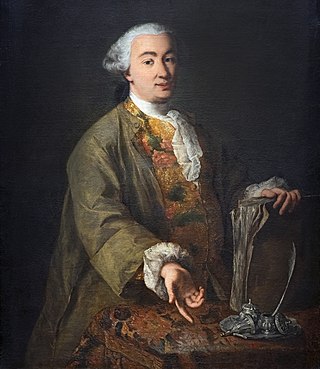
Carlo Osvaldo Goldoni was an Italian playwright and librettist from the Republic of Venice. His works include some of Italy's most famous and best-loved plays. Audiences have admired the plays of Goldoni for their ingenious mix of wit and honesty. His plays offered his contemporaries images of themselves, often dramatizing the lives, values, and conflicts of the emerging middle classes. Though he wrote in French and Italian, his plays make rich use of the Venetian language, regional vernacular, and colloquialisms. Goldoni also wrote under the pen name and title Polisseno Fegeio, Pastor Arcade, which he claimed in his memoirs the "Arcadians of Rome" bestowed on him.
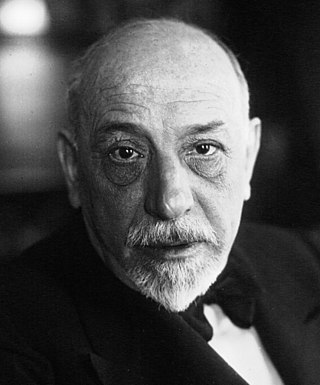
Luigi Pirandello was an Italian dramatist, novelist, poet, and short story writer whose greatest contributions were his plays. He was awarded the 1934 Nobel Prize in Literature for "his almost magical power to turn psychological analysis into good theatre." Pirandello's works include novels, hundreds of short stories, and about 40 plays, some of which are written in Sicilian. Pirandello's tragic farces are often seen as forerunners of the Theatre of the Absurd.
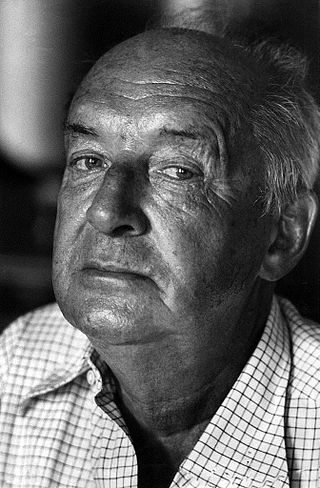
Vladimir Vladimirovich Nabokov, also known by the pen name Vladimir Sirin, was an expatriate Russian and Russian-American novelist, poet, translator, and entomologist. Born in Imperial Russia in 1899, Nabokov wrote his first nine novels in Russian (1926–1938) while living in Berlin, where he met his wife. He achieved international acclaim and prominence after moving to the United States, where he began writing in English. Nabokov became an American citizen in 1945 and lived mostly on the East Coast before returning to Europe in 1961, where he settled in Montreux, Switzerland.
Translation studies is an academic interdiscipline dealing with the systematic study of the theory, description and application of translation, interpreting, and localization. As an interdiscipline, translation studies borrows much from the various fields of study that support translation. These include comparative literature, computer science, history, linguistics, philology, philosophy, semiotics, and terminology.
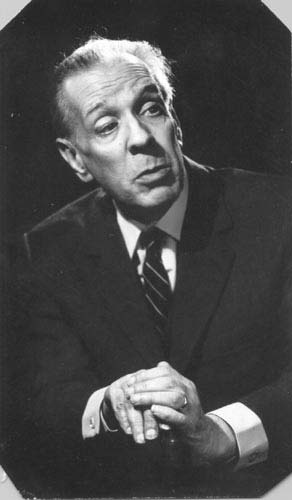
This is a bibliography of works by Argentine short-story writer, essayist, poet, and translator Jorge Luis Borges (1899–1986).
20th-century French literature is literature written in French from 1900 to 1999. For literature made after 1999, see the article Contemporary French literature. Many of the developments in French literature in this period parallel changes in the visual arts. For more on this, see French art of the 20th century.
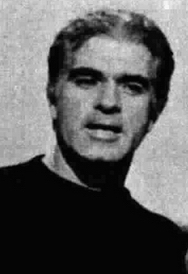
Giorgio Strehler was an Italian stage director, theatre practitioner, actor and politician.
"Borges and I" is a short story by the Argentine writer and poet Jorge Luis Borges. It is one of the stories in the short story collection The Maker, first published in 1960.

After Babel: Aspects of Language and Translation is a linguistics book by literary critic George Steiner, in which the author deals with the "Babel problem" of multiple languages.
Guernica Editions is a Canadian independent publisher established in Montreal, Quebec, in 1978, by Antonio D'Alfonso. Guernica specializes in Canadian literature, poetry, fiction and nonfiction.
Venetian literature is the corpus of literature in Venetian, the vernacular language of the region roughly corresponding to Venice, from the 12th century. Venetian literature, after an initial period of splendour in the sixteenth century with the success of artists such as Ruzante, reached its zenith in the eighteenth century, thanks to its greatest exponent, dramatist Carlo Goldoni. Subsequently, the literary production in Venetian underwent a period of decline following the collapse of the Republic of Venice, but survived nonetheless into the twentieth century to reach peaks with wonderful lyrical poets such as Biagio Marin of Grado.

Translation is the communication of the meaning of a source-language text by means of an equivalent target-language text. The English language draws a terminological distinction between translating and interpreting ; under this distinction, translation can begin only after the appearance of writing within a language community.
National Translation Mission (NTM) is a Government of India initiative to make knowledge texts accessible, in all 22 official languages of the Indian Republic listed in the VIII schedule of the Constitution, through translation. NTM was set up on the recommendation of the National Knowledge Commission. The Ministry of Human Resource Development has designated Central Institute of Indian Languages as the nodal organization for the operationalization of NTM.

Anneke Brassinga is a Dutch writer and translator. She was awarded the Constantijn Huygens Prize in 2008, and has received numerous other prizes as well.

Yo-Yo Boing! (1998) is a postmodern novel in English, Spanish, and Spanglish by Puerto Rican author Giannina Braschi. The cross-genre work is a structural hybrid of poetry, political philosophy, musical, manifesto, treatise, memoir, and drama. The work addresses tensions between Anglo-American and Hispanic-American cultures in the United States.
Translation criticism is the systematic study, evaluation, and interpretation of different aspects of translated works. It is an interdisciplinary academic field closely related to literary criticism and translation theory. It includes marking of student translations, and reviews of published translations.
De l'un au multiple: Traductions du chinois vers les langues européennes Translations from Chinese into European Languages is an academic book in French and English with essays about translations of Chinese into European languages. It was published in 1999 by the Éditions de la MSH, Fondation Maison des sciences de l'homme, and edited by Viviane Alleton and Michael Lackner. The introduction states that the purpose of this work is to examine specific issues in translation from Chinese to European languages and from the Chinese culture to Western cultures, instead of promoting a new theory regarding translation.
Exophony is the practice of writing in a language that is not one's mother tongue. While the practice is age-old, the term is relatively new: French linguists such as Louis-Jean Calvet discussed "littérature exophone" since 1979, while the German equivalent, Exophonie, was used within the field of literary and cultural studies by Susan Arndt, Dirk Naguschewski and Robert Stockhammer in 2007. In English, Chantal Wright proposed its more widespread use in 2008, wrote a paper on it in 2010, and went on to teach a course at the University of Warwick in 2016/7.
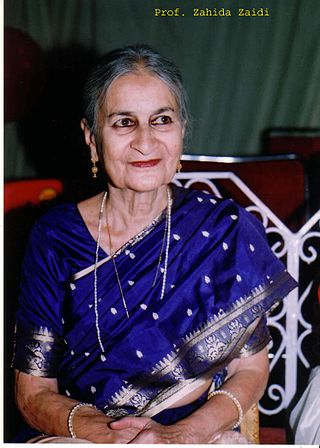
Zahida Zaidi was an Indian scholar, professor of English literature, poet, dramatist, playwright, and literary critic. Her literary contributions include more than 30 books in Urdu and English related to social, psychological, and philosophical aspects, and the translation of the literary works of Chekhov, Pirandello, Beckett, Sartre, and Ionesco. She produced and directed several plays of Indian and Western authors in Urdu and English. She received the Hum Sab Ghalib Award for Urdu drama awarded by the Ghalib Institute, Delhi, and the Kul Hind Bahadur Shah Zafar Award.










